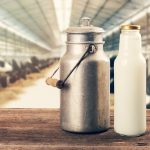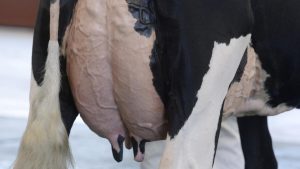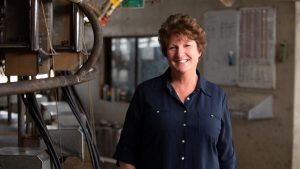
John Droppert, Dairy Australia’s head of economics, data and insights, told Dairy News Australia there was a lot of pressure on milk processing companies to secure supply.
While initial offers in June might hover around $8/kg of milk solids, he expects the standard farm gate milk price will rise to $8.50 or higher. Some of this price differential could depend on the region where dairy farming occurs.
He expects there will also be step-ups during the year.
There are definite expectations of farmers choosing to move processors this year, based on the offered pricing system and productivity incentives.
But processors also did not want to secure an excess amount of milk. That meant they would have to negotiate — potentially at a loss — with other processors to offload excess milk during the season.
“I estimate initial milk prices will soften to $8/kg MS, but range up to $8.50,” John said.
“I think initially we’ll see some conservative price offers, then the market and farmers reacting to that and the processors reacting to each other.
“If dairy farmers are planning for $8, I think they’ll be delightfully surprised.
“And I think we’ll see milk processors that are prepared to lose milk supply.”
Milk processors are trying to lower the expectations of dairy farmers, while acknowledging they may have little control over the marketplace.
That may mean milk processor companies will wear rising input costs for another year, but seek to offer lower prices going into FY2026.
“Later on in the season, if we see market recovery, if we see milk production falling too far, the competition between processors heats up,” John said.
“This season, milk production grew during the spring and processors ended up with more milk than they wanted. I don’t think they want to do that again.”
Allan Hood, CEO of Bulla Dairy Foods, told Dairy News Australia that he spent April and May meeting with suppliers on their farms to discuss their expectations, and how hard it would be to meet those expectations.
“Farmers want the price to stay high and competitively high,” Allan said.
“They are expecting a price correction for this next year, but there’s still mistrust at the farm gate about why that needs to happen.
“The market in Victoria will drive the milk price. The milk price will be set based on who wants milk.
“The industry needs to work together, so the dairy industry in Australia is strong for everyone.
“The dairy industry in Australia is in crisis. There’s a disconnect between what farmers and processors want.”
Some of the key considerations for milk processing companies were rising input costs and lack of skilled labour.
Allan said Australian products sold into the domestic market were competing with global imports and a key factor was the cost of production.
“Imported dairy products are our biggest challenge,” he said.
A lot of dairy products coming into Australia out of Asia were being packaged at appropriate food grade, but much cheaper than Australian processors can. This affected the shelf price, and consumer choice.
Australian manufacturers competed on brand.
“We need to drive the brand, be efficient, diversify our product offerings and invest in telling our stories about the industry,” Allan said.
He said the government needed to make some hard decisions about alleviating inflation and cost of living pressures for consumers, and to promote Australian brands.
“The industry needs to lobby hard to raise awareness about imported products, price, food safety and quality, biosecurity … these are issues for all Australians.”
Mancel Hickey, Group CEO of Goulburn Valley Creamery and St David Dairy, said milk prices expected by dairy farmers were a significant issue for processors.
“Milk processors and dairy farmers need to adapt to the market conditions,” he said.
“We need to change what we do. We each need each other and collectively our costs continue to go up.”
John Droppert said growth in the Australian milk pool was unrealistic in the short term. Some of the barriers included the cost of entry into the dairy industry in Australia, cost of labour and availability of skilled labour, and risk aversion.
From a processor perspective, John estimated growth in cheese, especially cream cheese, and liquid milk.
“Liquid milk is a staple of the Australian dairy industry and a stable business base, less exposed than other products and unlikely to grow in demand,” he said.
“There’s certainly opportunities in skim powder because we’re a market that’s hungry for butter fat, so the domestic market is a safe place for butter fat.
“So turning that skim milk powder into a [value-added] product is a pretty key opportunity.
“Cheese, cream cheese, butter, skim and the nutritionals manufactured from whey powder are all growth opportunities for manufacturers and dairy farmers.
“I think we’ll see the industry consolidate to more of a focus on those categories.”
Growth is significantly less in products like whole milk powder where competition is more intense from overseas manufacturers.
John forecast the global market for dairy would remain sound, but Australian farmers would receive fluctuating returns.
“World population and per capita consumption of dairy products keeps growing.
“Milk prices year-on-year have grown about three per cent and I think we’ll continue to see that growth in the medium term.
“Everyone is expecting prices to soften and I wouldn’t be surprised if they remain soft going into the 2026FY season, before we start to see recovery and prices pick up again in the second half of the decade.”
The caveats are around input costs of feed and fertiliser.
You can now read the most important #news on #eDairyNews #Whatsapp channels!!!
🇺🇸 eDairy News INGLÊS: https://whatsapp.com/channel/0029VaKsjzGDTkJyIN6hcP1K

























